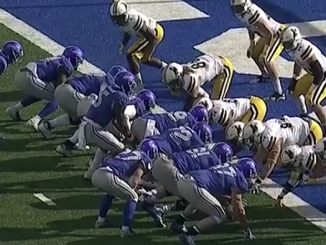
On one hand, it could be said that it’s a mystery as to why Air Force — 12-7 in one-possession games from 2014 through 2017 — went 2-5 in one-possession contests in 2018.
By Matt Zemek
On one hand, it could be said that it’s a mystery why Army has risen in one-possession games (13-3 in its last 16 one-score games) while Navy and Air Force have dropped in that same category. Navy had also displayed a knack for winning the close games for most of this decade, but also fell to 2-4 in one-score games last season.
Army, Navy and Air Force play in different situations. None share the same conference, even though they all play in the Commander in Chief’s Trophy series. If they shared a conference, it would be so much easier to view one team’s rise and another team’s fall as part of a larger dynamic, but with different conference or independent situations, it is much harder to do that. Hence, one can conclude that the fates of the three FBS service academies are shrouded in mystery.
Yet, what might seem like a mystery on the surface — and what might be puzzling to Air Force in a year when it improved a lot of its metrics but didn’t have the wins to show for it — has a very clear root cause. Last year’s 5-7 record for Air Force, the second straight losing season for the program, was in many ways confounding. Air Force played its opponents closer. The defense didn’t hemorrhage nearly as much. The Falcons beat Navy. Yet, Air Force could not improve upon its 5-7 mark from 2017. Troy Calhoun expected something better. Everyone in the program did. The team’s offense essentially stayed where it was in 2017, averaging one fewer point (30 compared to 31) in 2018. The defense, however, made a substantial jump from 2017, improving by 6.6 points.
The 2018 Air Force defense allowed 25.8 points per game, down from 32.4 in 2017, essentially a touchdown. Given the offense-first nature of modern college football, and given how difficult it is for defenses to handle all these different playing styles — the triple option or variants thereof at one end, the spread passing attacks at the other — being able to allow fewer than 30 points per game isn’t bad.
Under 28 points — four touchdowns — per game is even better.
Air Force managed to allow fewer than 26 points per game.
That should be good enough to win seven or eight games… and yet, in 2018, it didn’t, even though the Falcons scored an average of 30.2 points per contest.
The close-game loss factor noted above was their undoing… but it wasn’t as much of a mystery as the surface numbers might suggest.
It is true that a team which loses one-possession games is generally unlucky. Yes, some one-possession losses are the result of trailing by 11 points late in a semi-competitive game and tacking on a garbage touchdown in the final 30 seconds… but that was not normally how Air Force lost its close games in 2018.
Air Force had the ball with a chance to tie or take the lead against Florida Atlantic, San Diego State, and Nevada. Against Nevada, the Falcons’ drive was stopped in the red zone.
It is easy to look at the very end of a game and say the final drive’s failure or interception was the decisive moment. To the extent that a final failure seals defeat, that is an acceptable and allowable conclusion… but in a game stuffed with plot twists, various accumulated plays matter.
For Air Force in 2018, slow starts in these four one-possession losses mattered. Air Force failed to score 10 points in all four games against FAU, San Diego State, Nevada, and Army. The overall totals of yards and first downs might not have looked bad, but as anyone who follows football knows, plenty of yardage and first-down totals can be skewed by prevent defenses, need-to-throw situations, and other related contexts. So, while Air Force’s 2018 defense was undeniably a lot better than the 2017 version, the offense’s 30.2-points-per-game average was deceptively high.
There were way too many points this past season when the offense fell into a ditch for 20, 30, or 40-minute segments of play. The one-score losses might have been unfortunate to a degree, but the Falcons did a lot to put themselves in position to lose. It’s not as though freak occurrences hijacked generally strong 60-minute performances. No — Air Force played far too many 30-minute games this past season. Viewed through that lens, the 5-7 record doesn’t seem like an improbable occurrence.
Sure, the laws of averages suggest that giving up 25.8 points per game should lead to a 7- or 8-win season. To that degree, Air Force was unlucky in 2018. Yet, the many offensive stumbles the Falcons endured last year show why this team has plenty of reasons to look in the mirror and get things right in 2019.


